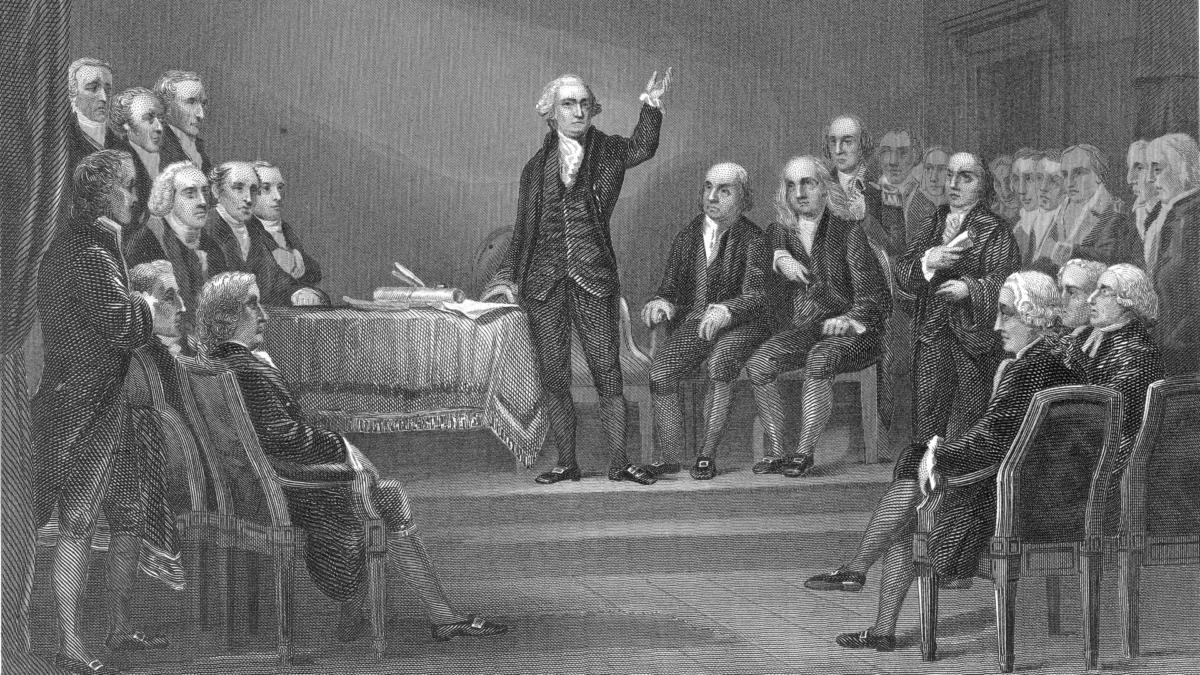The Constitutional Convention: Building a More Perfect Mess

Originally meant to revise the failing Articles of Confederation, the delegates at the Constitutional Convention ended up tearing up the old blueprint and starting over.
The Dive
By 1787, the United States was independent, but barely united. The original government, built under the Articles of Confederation, was more like a long-distance friendship between states than an actual country. Congress couldn’t tax, enforce laws, or raise an army. It was chaos.
So 55 delegates from 12 states (Rhode Island skipped out) met in Philadelphia to fix things. They were supposed to patch up the Articles. Instead, they scrapped them and decided to create something totally new: the Constitution.
George Washington was chosen to lead the convention. But it was James Madison, the quiet, bookish guy from Virginia, who brought the ideas. Along with folks like Benjamin Franklin, Alexander Hamilton, and Gouverneur Morris, they crafted a plan for a national government strong enough to work—but not so strong it would turn into a monarchy.
Big states and small states clashed over how to share power. The result? The Connecticut Compromise: a two-house Congress. One (the House of Representatives) based on population, and the other (the Senate) giving every state equal power. Still controversial today.
Then came the biggest elephant in the room, slavery. Instead of ending it, the delegates made compromises that protected it, including the Three-Fifths Clause and allowing the slave trade to continue for 20 more years. These choices haunted the country for nearly a century, and still do.
Another big debate? How to choose a president. Elect by Congress? The people? A committee? The compromise: the Electoral College. It wasn’t anyone’s favorite idea, but it stuck.
Not everyone was happy with the final document. It had no bill of rights. It gave the federal government a lot of power. But supporters like Madison promised changes. Eventually, all 13 states signed on, and in 1791 the first 10 amendments, the Bill of Rights—became law.
Through all the arguments, secrecy, and stubbornness, the delegates created the oldest written national constitution still in use today. Not because it was perfect, but because it could be changed. That’s why it starts with: 'We the People.'
Why It Matters
The Constitution didn’t fall from the sky, it was built by people who argued, compromised, and didn’t always get it right. But it gave us a framework to keep improving. Learning how it was made helps us understand what kind of country we were meant to be, and what kind we can still become.
?
Why did the Articles of Confederation fail?
What were the biggest compromises made at the Constitutional Convention?
Why didn’t the original Constitution ban slavery?
What’s the difference between a federal and national government?
How does the Constitution still shape debates about government power and rights today?
Dig Deeper
Discover how a meeting to revise the Articles of Confederation turned into the creation of the U.S. Constitution. A look inside the people, problems, and politics of 1787.
Related

From Articles to the Constitution
The Articles of Confederation got us through a revolution—but not much more. Weak laws, no executive, and constant in-fighting forced the Founders back to the drawing board. What came next? The Constitution.

Federalists vs. Anti-Federalists: The Battle That Built the Constitution
One side feared chaos. The other feared tyranny. Together, they gave us the Constitution—and the Bill of Rights.

The Bill of Rights: What Is It—and What Does It Actually Do?
The Bill of Rights wasn’t added to the Constitution because everything was going great, it was added because the people didn’t trust the government. And they had every reason not to.
Further Reading
Stay curious!
